The Chinese breeding industry has to pass these levels
Author:China News Weekly Time:2022.09.16

The government is continuing to strengthen the status of corporate technology innovation.
At the same time as helping you, you must also help you to help you
Guide most small and medium -sized enterprises differentiation development
Avoid repeated investment
Standing by the window of Yang Yuanzhu's office and looking out, it is a 1500 -acre rice test field. This is the Guanshan R & D base of Longping Hi -Sciences Academy of Changsha Township, Changsha, Hunan. Yang Yuanzhu is the dean of the Academy of Seed Industry, and he is also the vice president of Longping Hi -Tech and chief expert of rice. This summer, despite the high -temperature "roasting" test, the three rice main types of rice in Longping Hi -Tech have surrendered the "high -scoring answer sheet" to high temperature resistance. Essence In addition, Longping Hi -Tech has also developed a series of new varieties of rice plague and rice livelings in recent years.
Seed enterprises are the backbone of the development of the modern seed industry. In July last year, the Central Reform Commission reviewed the "Program for the Revitalization of the Seed Industry" that it was emphasized that we need to guide resources, technology, talents, capital and other factors to gather to key advantage enterprises. After a year, the Ministry of Agriculture and Rural Ministry issued the "Notice on Supporting the Development of the National Seed Industry Formation Enterprise" (hereinafter referred to as the "Notice"), and proposed that it must be used as a key trick for helping the company as a good way to fight the industry. Againing the leading enterprise with core research and development capabilities, industrial driving capabilities, and international competitive capabilities, and "invisible champion" enterprises, to accelerate the formation of the cluster of advantageous breeding enterprises.
Seeds from laboratory to farmers must go through three stages of education. "Education is the core, complicated and push is the key, stable R & D investment is guarantee, and it is difficult to be beaded into a chain to realize the integration of breeding and push." Continue to strengthen the status of enterprise technology innovation, while helping and strengthening, and help specializing in supporting specialization and guiding most small and medium -sized enterprises to develop into a differentiated and professional "specialized new" seed enterprise.
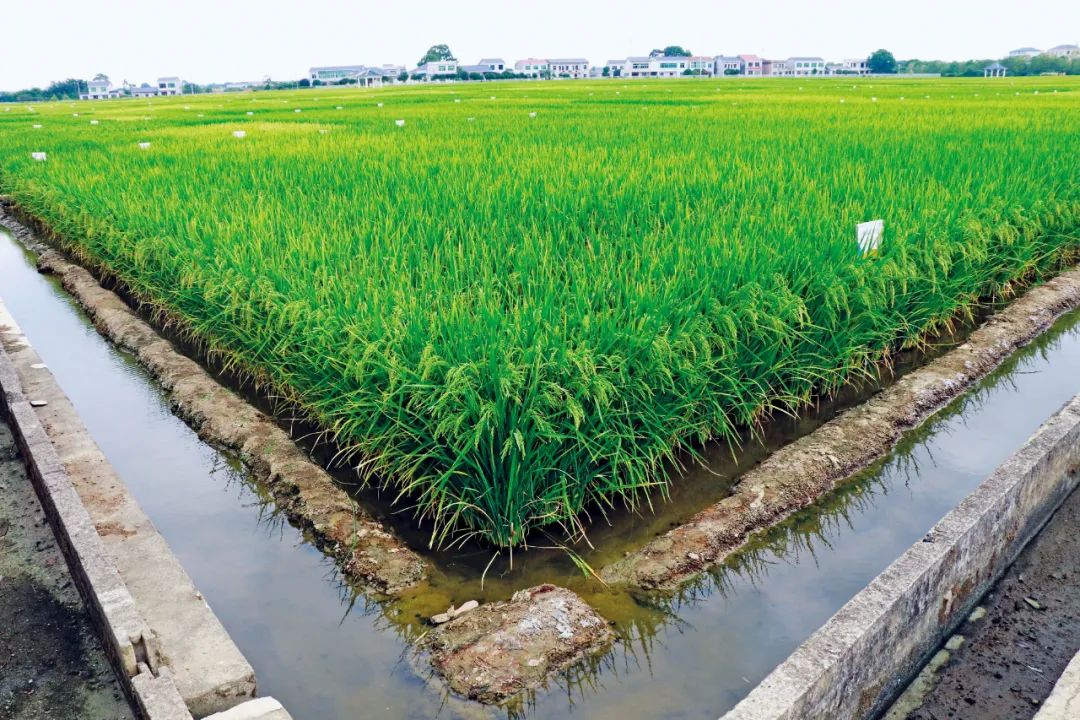
Guanshan R & D Base, Longping Hi -Sciences, Changsha Township, Changsha, Hunan. Photography/Reporter Niu He
Most enterprises are small in size and are not competitive
From a technical perspective, breeding innovation is divided into 4 stages: from farm breeding in the 1.0 era to hybrid breeding in the 2.0 era, to molecular breeding in the 3.0 era, and "biotechnology+artificial intelligence+big data information technology" in the 4.0 era. Yang Yuanzhu said that some domestic breeding companies are doing small -scale molecular auxiliary breeding, and most of the grassroots agricultural sciences and scientific research institutes are still mainly traditional breeding. Longping Hi -Tech is now in the 3.0 to 4.0 era. Among them, molecular breeding technology has been widely used in the cultivation of rice germplasm resources and cultivation. Thousands of.
Yang Yuanzhu told "China News Weekly" that 12 years ago, Longping Hi -Tech established a biotechnology laboratory, and has introduced more than 200 sets of advanced instruments and equipment worth more than 2 million yuan in advanced instruments. The current laboratory area It has reached 3,000 square meters and more than 40 staff members, including 28 full -time R & D personnel.
Longping Hi -Tech is one of the few domestic integration in China, that is, enterprises with integration of breeding, breeding, and promotion, ranking ninth among the top ten major industries in the world. From the perspective of the development of the breeding industry in developed countries, breeding R & D has gone through three stages of scientific research institutes, united government -enterprise joints, and large multinational seed enterprises. The main body of developed countries in the seed industry has transitioned to enterprises, and has been merged and reorganized, and transnational mergers and acquisitions has formed a global gearl giants such as Bayer and Codihua. China is still at the stage of universities, research institutes and enterprises in the breeding R & D role.
In 2019, the New York Times wrote that just 50 years ago, about 1,000 small and family workshop -type seed production and sales companies in the United States had dropped to less than 100 by 2009. Due to a series of consolidated and acquisitions in the past few years, four multinational giants -Codihua, Xianzhengda, Bayer and BASF have controlled 60 % of the world's seed markets.
In April 2011, the State Council issued the "Opinions on Accelerating the Development of the Modern Agricultural Working Industry", that is, the "Seed No. 8", which first clarified the status of the business and breeding subject of the enterprise and the development of the breeding industry. For more than ten years, Chinese breeding enterprises have made a lot of development.
In 2016, China Chemical Group acquired Xianzhengda for $ 43 billion. This is the largest acquisition of overseas since the founding of New China. In 2017, Longping Hi -Tech and CITIC Agricultural Industry Fund acquired the US Tao's agricultural company at the specific corn seed business in Brazil and obtained the right to use its Brazilian corn germphaust resource library.
According to the world's top 20 companies in the world, the national sales accounted for the market value of the global market market, and the competitive index of enterprises in different countries was calculated. In 2020, the competitiveness index of Chinese seed enterprises ranked third in the world. According to the "2021 China Agricultural Working Industry Development Report" (hereinafter referred to as the "Report") released by the Ministry of Agriculture and Rural Affairs, the market value of China's agricultural work industry in 2020 is about 120 billion yuan, which is the world's second largest seed market.
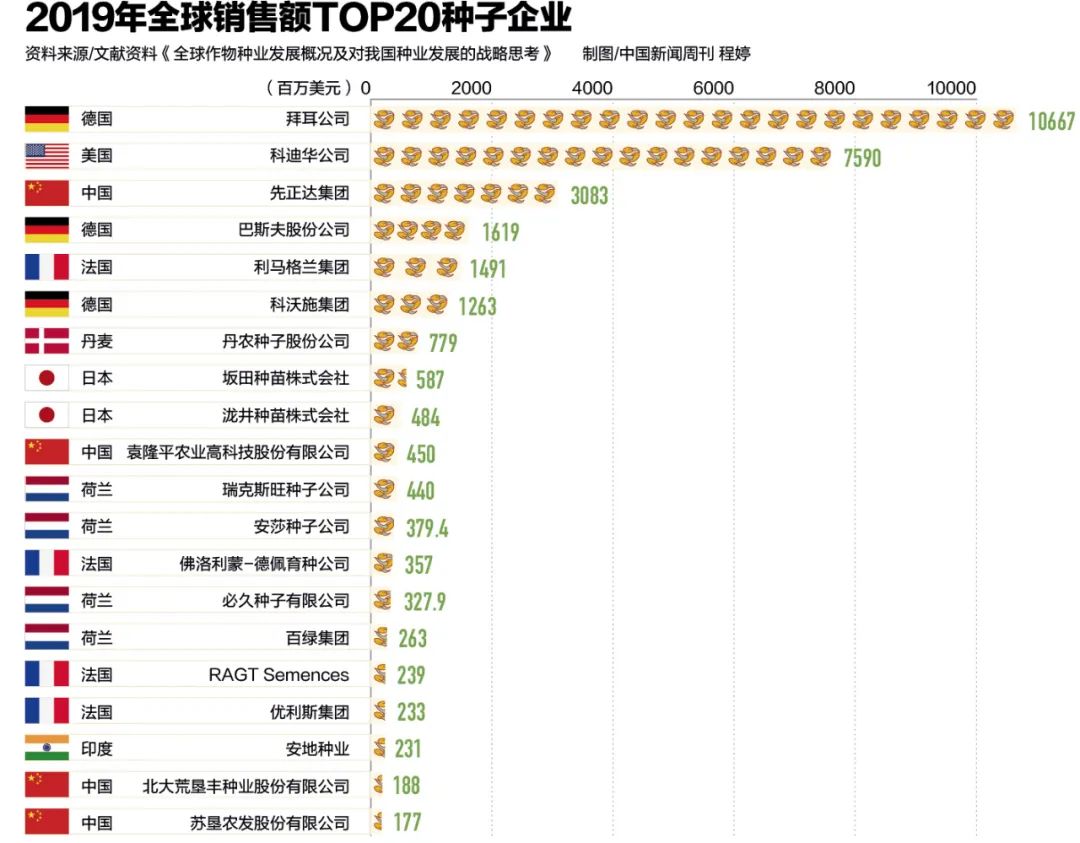
However, at the same time, the Ministry of Agriculture and Rural Affairs mentioned in the "Notice" reporter in August this year that there are two top 10 global agricultural species companies in the world, but most seed companies are small and their competitiveness is not strong. According to the "Report", 7,372 seed companies across the country involved more than 30 crop -related businesses such as rice, corn, wheat, and vegetables. The total assets were more than 270 billion yuan, and the seed sales revenue was more than 74 billion yuan. Song Weibo, a member of the Party Committee of Xianzhengda Group and the general manager of China Seed Group Co., Ltd., told China News Weekly that at present, there are only 15 species with domestic net assets of more than 1 billion yuan. There are only about 100. In this reality, most companies are not capable of carrying out large -scale research and development, which is the biggest pain point facing domestic companies.
He further analyzed that the breeding industry has large investment in research and development, long cycles, high risks, and a seed, from the excavation of gear resources to breeding, generally take about 10 years. Song Weibo believes that companies that lack scientific research innovation will further increase the difficulty of capturing high -value areas in the industry.
Yuan Shaohua is the head of a seed company in Hunan and has been in this industry for more than 30 years. His company is an ordinary one of the 7372 seed companies in China. Although the company has only rice varieties for independent research and development, the research and development costs are 3 million yuan to 4 million yuan a year. He analyzed the "China News Weekly" that the seed industry is a high -tech attribute industry. If there is no core resources and research and development capabilities for breeding companies, it is difficult to last and grow by waiting for the innovative varieties of scientific researchers. However, due to the low profit of the seeds and the high investment in R & D, small companies have to buy generation research.
Yuan Shaohua said that in the late 1990s, the country's funding was insufficient, and the scientific research units were relatively lacking. In contrast, the treatment of enterprises was more advantageous and could dig from scientific research institutions to talents. Today, this situation is already different. His company's rice research and development team is a talent dug in early in 2013 with an average age of about 40 years. He told "China News Weekly" that the salary of breeders in various agricultural institutions and scientific research institutes is issued by the state and scientific research funds are issued by the state. 80 % of the results of some scientific research institutions can be attributed to individuals. So many inputs.
The "Seed No. 8" released in 2011 proposed that the public R & D institution withdrew from commercialized breeding. After 2015, the government proposed the combination of industry -university and research in the field of seed industry to encourage scientific researchers to conduct technical service guidance in seed enterprises, and participate in the distribution of scientific research results during the service period. Yuan Shaohua said that when scientific researchers bring the innovative achievements of breeding to guide enterprises, companies have less motivation for research and development.
Even as seed companies such as Longping Hi -Tech have entered the world's top ten seed companies, there is a lot of gaps with world giants. According to the data provided by Longping Hi -Tech, as of August 30, its net assets were 6.2 billion yuan, and Bayer's net assets exceeded 860 billion yuan, which was 140 times that of Longping Hi -Tech. In 2021, Longping Hi -Tech revenue was 3.5 billion yuan, R & D investment was nearly 300 million yuan, and R & D personnel were 451. At the same time, Bayer's seed business revenue exceeded 55.1 billion yuan, agricultural business R & D investment reached 15.8 billion yuan, and R & D personnel were 7,300.
Li Zhan province, an expert at the National Grand Vegetable Industry Technical System and Associate Researcher of the Institute of Vegetable Flowers and Flowers of the Chinese Academy of Agricultural Sciences, told China News Weekly that the International Vegetable Flower Seed Company Giants Japan Bantian has established more than 20 vegetable bases and breeding worldwide worldwide The center has formed a virtuous circle of continuous R & D investment and personnel investment.
Ma Shuping, vice chairman of the Chinese Seed Association, told China News Weekly that the reason why foreign breeding giants are strong is that it not only has high, continuous original innovation capabilities, but also comprehensive supporting problems solutions, covering the entire seed industry Chain, so the market share is high.
Chen Guangyao, the director of Longping Hi -Tech, told China News Weekly that many seed companies often do not have a close connection between production and sales, and the seed markets are not "paid", which leads to a large amount of accumulation. Enterprises need to storage seeds at their own expense. If it is not sold out in the form of seeds, it can only be sold as general food, and the difference in damage is also very high. Taking hybrid rice as an example, the former is priced at tens of yuan per kilogram, and the latter is only two or three yuan per kilogram. The difference between 1,000 kg is as high as tens of thousands of yuan.
In July last year, after the release of the "Revitalization of the Seed Industry", the Agricultural and Rural Ministry deployed to promote the promotion of the germination enterprise to support the excellence. In November of that year, 70 were initially selected from more than 7,000 seed enterprises across the country, and it was planned to give key support. Create a group of leading companies. In July of this year, the Agricultural and Rural Ministry issued the "Notice" to select 270 advantageous enterprise institutions from more than 30,000 breeding enterprises, and strive to build a national breeding enterprise formation with "breaking problems, supplementing shortcomings, and strong advantages" to Realize the transformation from a large country to a great country to the seed industry. During the "Fourteenth Five -Year Plan" period, China Agricultural Development Bank will arrange funds with no less than 100 billion yuan to support the revitalization of the seed industry.
Regarding the commercial breeding system, since 2008, Longping Hi -Tech has established a mature "factory, segment" commercial breeding model, and gradually improved. In this model, to choose and launch a variety, you need to mobilize the strength of the entire Academy of Sciences and links with everyone. "If the varieties raised by scientific researchers, the market is not acceptable, it is equivalent to white effort." Yang Yuanzhu said that the varieties of the industrialized subjects of Longping Hi -Sciences must pay intellectual property fees to the company in accordance with a certain proportion as Longping Hi -Tech Scientific research fund. Some of them as the performance of scientific researchers not only drive the innovation enthusiasm of enterprise researchers, but also in line with the market and industrial orientation of breeding innovation. Chen Guangyao believes that for crops with small market size and low commercial value, many enterprises and scientific institutions lack the power of breeding. Zong Xuxiao, a researcher at the Institute of Cropology of the Chinese Academy of Agricultural Sciences, told China News Weekly that compared with major crops such as corn, the market survival status of small grain crops such as peas and broad beans is relatively difficult. "Dried broad beans and dried peas are facing the dilemma of farmers' non -breeds, and the seed company is unwilling to operate. The entire industrial chain is by the international market 'card neck'. The domestic is mainly concentrated on the production and cultivation of fresh broad beans and peas." Zong Xuxiao said Essence
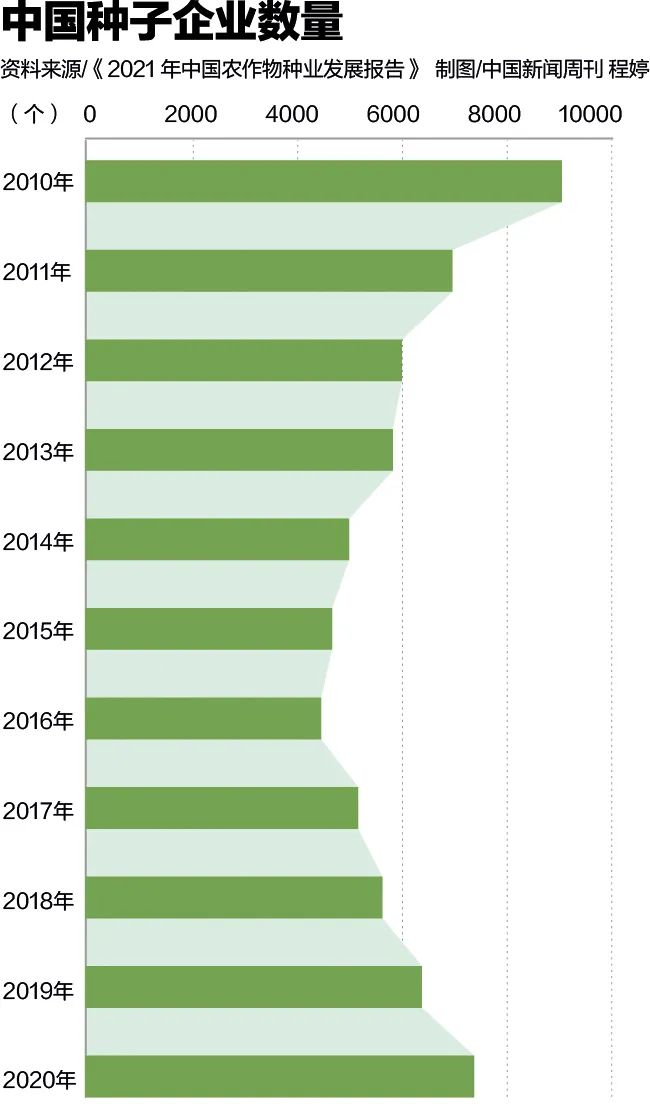
Chen Guangyao believes that the goal orientation of the list of formation companies is very good. The issue of thinking in the future is how to gather these resources and talents to move closer to the enterprise.
Strengthen intellectual property protection
Domestic seeds lack primitive innovation. On the one hand, the overall strength is weak, and on the other hand, it is because the country was not enough to protect the intellectual property rights of seed varieties.
"There are well -known hidden rules in the seed industry -breeding is worse than buying seeds, buying seedlings is worse than stealing, and stealing is worse than decks." It is mentioned that in addition to scientific research institutes, the main body of Chinese corn breeding also has difficulty counting private households. The breeding threshold is too low. Search for a few materials and rent a few acres of land to restrain the stove to make a hybrid breeding. One or two or two years can be tinked to many high imitation or even the pro -book of "painting gourds". Combination, output and adaptability can be comparable to the "new varieties" comparable to real varieties.
Hundreds of farmers removing weeds, ears and inferior plants to ensure the purity of the seeds in the Breeding base of Yuxiang Farm in Yongji City, Shanxi, to ensure the purity of the seeds. Photo/Visual China
According to statistics, from 2016 to 2020, the people's courts at all levels across the country concluded a total of 781 civil cases involving new plant varieties, and the annual number of cases increased from 66 in 2016 to 252 in 2020, of which more than 85 % were infringing plants that violated plants New varieties disputes mainly involve major crops such as corn, wheat, rice, and over 70 % of the variety rights in the case.
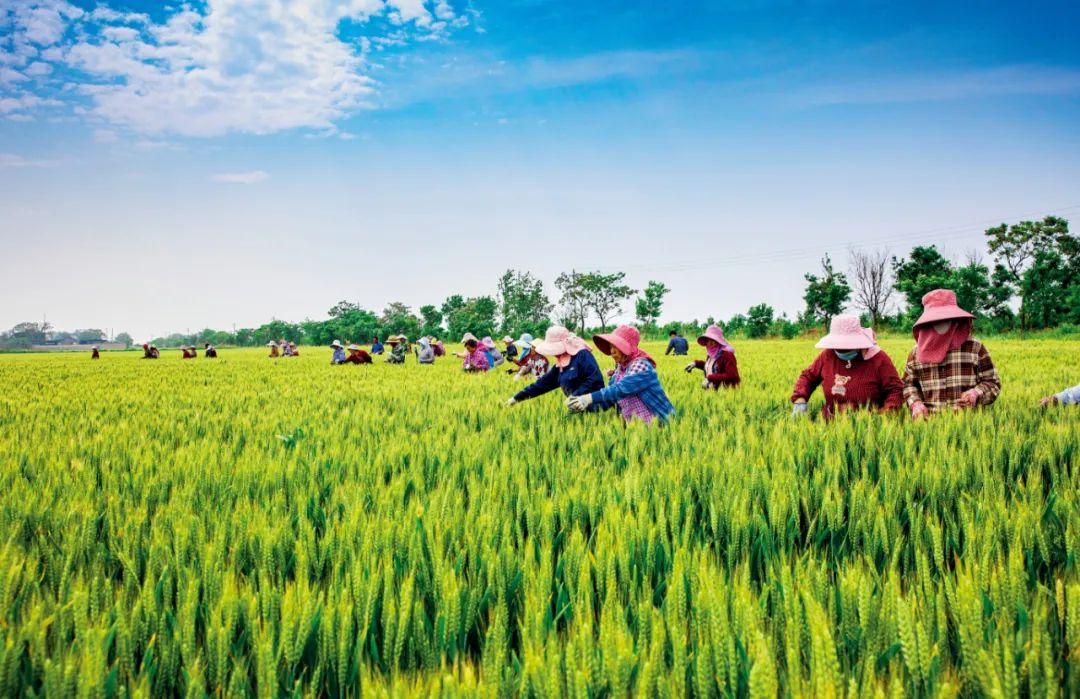
In general, the whole set of review documents such as this seed is its own, but the seeds are equipped with the seeds of other companies in the bag. In the aforementioned article, Tong Pingya pointed out that now there are many varieties, there are many seed stores, and there are fewer three or five hundred dealers in the corn production area, and there are thousands of them. Ten, 70 % of some serious areas are decks, and the harm caused by essence has affected all aspects of the entire seed industry.
According to the national referee documents, in May 2020, the staff of the Hunan Asian Seed Industry Science Research Institute under the Hunan Asia Seed Industry of Rongping Hi -Tech found that Zhang used the "Longke 638S" mother to breed the Ronglong Two Rice varieties. As a variety owner of "Longke 638S", the Yahua Academy of Sciences filed a lawsuit in the court. The results of the test and appraisal show that the infringement seed sample involved in the case is "Long Two Outstanding 1377", which is closely related to "Longke 638S".
"Our requirements are very low, as long as the infringement is terminated, but this is difficult to handle." Yang Yuanzhu said that the reason why infringement is not stopped is that the sampling is difficult; the second is that the implementation is difficult, and most cases are finally solved in a coordinated manner.
The Tomato breeding test base of the comprehensive test site of the Xinjiang Academy of Agricultural Sciences, the technical workers placed the tomato acupoint on the seedbed. Photo/Visual China
In accordance with the current regulations, identify whether the seeds are infringement, to obtain evidence first, and then obtain the field of DUS identification by qualified third parties (new plant varieties test). The test method of DUS still adopts field planting appraisal. Under the same growth conditions as the same growth conditions, from the seeds, seedlings, mature periods and other stages of the plant Records and compare with similar varieties. Generally, it takes 2 to 3 years of repeated observation to make a final evaluation. After that, if you find that there is indeed infringement, you can use a third party to issue a result to the court to sue.

Chen Guangyao believes that the deepening reason for the difficulty of solving the deck is the insufficient protection of intellectual property, and it is urgent to restrict the legal level.
On March 1st this year, the latest revised "Seed Law" was officially implemented, which is the fourth revision of the Seed Law since promulgation in 2000. Modify three aspects of the protection of new plant varieties: the scope of the protection of varieties and the protection of the right to varieties, the prescribed substantive derived variety (EDV) system, and the maximum multiple of punitive compensation and the maximum limit of legal compensation. EDV, which is a derivative variety that simply modify the original varieties.
"The biggest highlight of this modification is the establishment of the EDV system to clearly modify the derivative variety formed by the formation of the breeding results of others. When commercial use, it is necessary to obtain the consent of the original breed right and pay the use fee." Song Weibo told " China News Weekly, which is marked by the "Seed Law", the Chinese seed industry officially officially marketized in 2000, for a total of 22 years. Compared with many policies introduced in the past, the EDV system is a milestone because it clearly strengthens the protection of intellectual property rights. "The EDV system can improve the competition barriers and industry concentration, and increase the motivation of the original innovation of enterprises." In Song Weibo's view, before the introduction of the EDV system, there are more and more domestic homogeneous products, which leads to vicious competition and excessive vicious competition between enterprises. Competition, the industry is difficult to improve.
However, due to the half -year legislation, there is still a certain period of time in the implementation of supporting policies. However, in Song Weibo's view, in the environment of encouraging innovation and protecting intellectual property, the future deck will definitely change. "This phenomenon is now decreasing." Song Weibo said. On March 31st this year, of the second batch of typical cases of judicial protection of the human court's breeding industry in the Supreme People's Court, two cases of the fines of the infringement were as high as 3 million yuan.
Ma Shuping said that EDV appraisal should have certain technical support and standard specifications. At present, the relevant technical appraisal and standard specifications in rice crops have been promoted, and other crops need to be improved.
Seedlings in the rice seed base in Fuxing Town, Dongpo District, Meishan City, Sichuan. Figure/Zhongxin
It is worth noting that on April 24th, the Ministry of Agriculture and Rural Ministry launched the world's first DNA fingerprint gallery public platform in the world. At present, there are fingerprint databases of 16,000 varieties of corn, rice, wheat, sunflowers and other crops. DNA fingerprint detection, that is, the use of molecular marking to build a variety of specifically fingerprints to identify the authenticity of the variety. "This method has now become an important technical means for domestic and foreign species for varieties management, appraisal, and rights protection." Zhao Jiuran, director of the Corn Research Center of the Beijing Academy of Agriculture and Forestry, told China News Weekly.
Last year, after reviewing and approved by the "Promotion of Industry Revitalization", it took the intellectual property problem that has long -term trouble in the Chinese seed market as an example. The action plan mentioned that the deployment of the agricultural and rural ministry has been deployed for three years. Activities and half a year of protection of intellectual property rights for the protection of the seed industry have strictly put the bases, enterprises, and markets to "three levels", strictly fight fakes, fakes, deck infringement illegal acts, and focus on investigating a batch of major cases.

At the same time, in response to the serious problems of varieties that have occurred in recent years, in 2021, the Ministry of Agriculture and Rural Ministry of Agriculture and Rural Affairs has been newly revised and implemented by national rice and corn varieties, which has greatly improved the threshold for varieties to enter the market. In 2022, the rice varieties that passed the first review of the country decreased by 239 from last year, a decrease of 35.3 %.
Liu Chunming, a professor at Peking University and Dean of Modern Agricultural College, told China News Weekly that Chinese scientific researchers and enterprises must have awareness of patent protection and apply for protection for some key genes, key traits, and key varieties. The protection and counterfeiting must be strong. Only in this way can the country's breeding status be guaranteed.
Seed "landing"
The production cannot be around the land transfer. "China News Weekly" has noticed that in recent years, land transfer has become an increasingly trend. Simply put, farmers with land ownership, under the premise of retaining the contract, transfer the operating rights (use rights) to other farmers or other economic organizations.
The 54 -year -old Liang Hong is a villager in a village in Nanyang City, Henan Province. She currently operates 30 acres of land in the local area, of which 20 acres of land spend 10,000 yuan/year. Liang Hong noticed that began last year, the number of land in the village was increasing. According to her understanding, there are currently 3,622 acres of cultivated land in the village, and it has passed more than 1,200 acres, accounting for more than 30 %. The remaining 2,000 acres of land are still farmers in the local elder.
"Most of the peasants and peanuts in Murakami in the past, and many farmers now planted sorghum." Liang Hong told China News Weekly that the reason why this change occurred was because a winery needed a large number of sorghum crops to make wine, planting planting, planting, planting, planting, planting, planting, planting. The sorghum is more profitable, so that some of the land in the village is circulated.
"Whether it is an field crop or vegetable and fruits, the current seeds and seed bases are not lacking, and sometimes even more than demands." Ma Shuping said that the focus of the seed base is in order maintenance, such as "grabbing base" and Seed base Seed resource loss.
"In the past two years, there are many foreign companies or individuals to compete for cultivated land. Some bids 800 yuan/mu, and this circulation generally requires thousands of acres of cultivated land." Liang Hong said that the transfer price of land on the village has now risen to 500 Yuan/mu. Two years ago, the price of one acre was less than 100 yuan.
"For seed companies, the cost of land circulation is too high. The price of land circulation should be stabilized as much as possible." Ma Shuping said that she learned from Guizhou some time ago that the current circulation price of local rice seed bases is about 600 yuan/mu, and The cost of the Gansu corn -made province has risen to more than 3,000 yuan/mu.
Zhangye City, Gansu, the corn seed processing production line of Zhangye Branch of Degong Seed Industry Co., Ltd.. Photo/Visual China
In the past few years, Li Zichao, a professor at the Agricultural University of China Agricultural University, visited a farm for a 15,000 acres of rice in the United States. Li Zichao told "China News Weekly" that when he went, it was the farmer's driver's joint harvesting machine to harvest rice. The entire process included 4 people, including the farmers. In the context of mechanized operation, large -scale land planting in the United States does not require additional land transfer costs. The cost of land is relatively controllable, and one acre can earn $ 100. “国外的这种大规模农场经营和国内通过土地流转实现的大规模种植不同,前者没有土地流转成本,后者则是通过将分散农户的土地集中起来,需要支付土地成本费用。”马淑萍说, The core issue is that there are many people in China, less arable land, and less arable land resources and freshwater resources per capita, and these objective conditions are difficult to change.
Most enterprises follow the commissioned model of one year. There is a periodic of seeds, and companies will build long -term fixed bases based on the market market. Most of the bases of Longping Hi -Tech are based on the cooperation method of "company+farmers" or "company+company". Essence
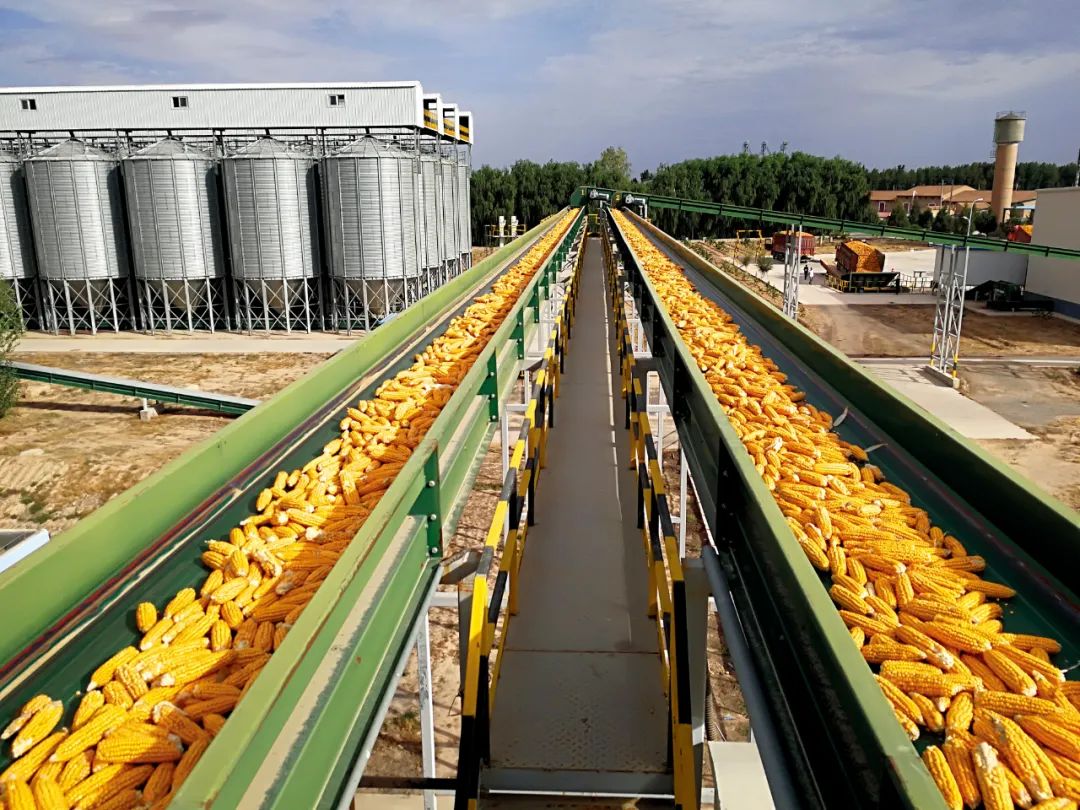
"The breeding base will not be easily replaced. One is that the cost of land circulation is high; the other is that there is also a risk of loss of seed resources; the third is that it takes time and energy to re -train local farmers." Huang Xinjian, general manager of China Vegetable Industry, told "China in China "News Weekly", because of its own characteristics, mechanized operation is not easy, and a large number of manual participation is still required. At present, there are hundreds of vegetables circulating on the market. The same vegetable category contains hundreds of vegetable varieties. The production and sowing procedures are different. Generally, when the variety is promoted, it is generally spent to train farmers to adapt to production. Over 3 years. Specific production links generally choose to cooperate with local production companies.
It is worth noting that on the one hand, the land is not enough, and the other side is a large area of land being "deserted." This phenomenon in Gansu, the largest corn -based base in the country, is no exception. According to the "three adjustments" data released in August 2021, Gansu has a total of 78.1421 million mu of cultivated land, of which about 5.5 million mu with the wasteland area with rectification conditions. From 2020 to 2021, the province has rectified 3.5 million mu of wasteland.
Li Zichao said that most of China is a small farmer's cultivation model. With the flow of population and economic development, many young people in rural areas now do not need to support themselves through planting land. , Industrial development and mechanized production can also reduce land waste. "
In Song Weibo's view, good varieties should be supported by good breeds, that is, according to the growth and development characteristics of the variety, we should adopt corresponding planting methods to achieve the purpose of high yield, stable production and efficient. Therefore, in addition to promoting sales, it is more important to do supporting services such as plant nutrition, fertilizer, and plant protection, so that the seeds can eventually "land" and release the potential of seeds.
What kind of industrial chain is needed?
At present, most domestic scientific and technological resources and talents are still in scientific research institutes. "In terms of the marketing of new varieties, it is also necessary to rely on the power of breeding companies." Liu Yaoguang, an academician of the Chinese Academy of Sciences and a professor at South China Agricultural University, told China News Weekly.
Starting in 1986, Zhao Jiran, director of the Corn Research Center of the Beijing Academy of Agriculture and Forestry, has been engaged in corn breeding for 36 years. The team has cultivated more than 100 corn varieties such as Beijing Science 968, Agricultural Science Jade 368, Agricultural Science and Technology 336. A total of over 300 million mu is promoted. "Jingke 968 has been selected from germplasm resources in 2001, and passed the national approval in 2011. It took 10 years, and it took 10 years to achieve a large -scale promotion and application, which took a long time." Zhao Jiuran said. Beginning in 2012, Zhao Jiuran's team began to form a consortium to jointly promote Jingke 968 with seven companies including China Carler Group and Denghai Seed Industry. His team provides the original type of pro -pro -based, species and supporting cultivation technologies, and the enterprise is responsible for seed production and demonstration.
"The overall cooperation with the research units and the enterprise is more active compared to the previous years." Yang Yuanzhu said that many scientific research institutions and universities at the front end of Longping Hi -Tech and the front end of the variety innovation have close cooperation. The basic research results and excellent germplasm resources have accelerated the company's commercial breeding development.
Wan Jianmin, an academician of the Chinese Academy of Engineering and the former vice president of the Chinese Academy of Agricultural Sciences, pointed out in an interview with China News Weekly that modern biochemical breeding requires chain -type innovation and needs to be promoted from the integration of product resources to product integration. Companies with abilities.
In Song Weibo's view, domestic breeding systems still need to be further improved and improved the efficiency of research and development innovation. Many seed products are still in a state of catching up abroad. The speed of catching up, in addition to resources and technology, is largely affected by corporate innovation efficiency. What is easy to be ignored by many people is that when setting the goal, these international giants are also moving forward, and they go faster.
"Seed enterprises to the entire industry cycle, equivalent to the" engine 'to the car. "Liu Yaoguang said that in the future, domestic breeding companies will gradually centralize through mergers and acquisitions, mergers, etc. Essence "But mergers and acquisitions are not the only way for all seed companies. It should also consider how compatibility and optimization after mergers and acquisitions can achieve the effect of '1+1 & 2'." Ma Shuping said. Song Weibo analysis said that considering the different positioning and competitive advantages of different enterprises in the industrial chain, different enterprises can adopt various ways of cooperation to achieve a transformation from competition to competition. In terms of breeding innovation system, domestic reforms are greater efforts. For example, this year's Central Document No. 1 is clear, accelerate the implementation of key core technologies for agricultural technology, implement the "unveiled list", "Ministry of Provincial Lienity" and other systems, and carry out pilots of long -term R & D projects. The "unveiled list", that is, the corporate or laboratory proposes to overcome the seed industry, and then attract scientific research units with corresponding capabilities to complete specific tasks.
Since the release of the "Promotion of Industry Revitalization", Guangdong, Sichuan, Shandong, Zhejiang, Henan, Jiangsu and other provinces have planned and constructed local species industry groups in many provinces.
In April this year, the Henan Provincial People's Government issued the "Central Plains Nonggu" Construction Plan. The development goal of this plan mentioned that by 2025, the first -class domestic species industry innovation platform is built; creating a highland of scientific and technological innovation in wheat and corn; cultivating 1 national top ten types of industries in the country and realizing listing, high -tech in the agricultural field, high -tech in the agricultural field More than 10 enterprises have been cultivated, and 3 to 5 national agricultural industrialized leading enterprises are cultivated. According to the "Henan Daily" reported on August 15, the "Henan Provincial Seed Industry Group Preparation Plan" has been studied and approved in the early stage of the Provincial Party Committee Standing Committee, and will be listed in the Central Plains Nonggu in the near future.
On August 18, Zhejiang Seed Industry Group was established in the Hall of the People in Zhejiang Province. The group's registered capital is 1 billion yuan, and 100 % of the province's only agricultural enterprise -related enterprise provincial rural development group Co., Ltd. is contributed. It is understood that Zhejiang Seed Industry Group will build a platform for technology, innovation, strategic, and industrial seed development platforms that are integrated around the development of the breeding industry in Zhejiang.
Chen Guangyao said that for the entire industrial industry chain, from the collection of quality resources, to talent, funds, varieties, participating companies, market share, etc., etc., and reducing duplicate investment. In Chen Guangyao's opinion, the core issue is now, with more repetitive investment. Provincial, municipal, and county -level levels are put into scientific research funds, and each level is not significant to do scientific research and breeding innovation. County units should be more suitable for innovation in local agronomy, marketing promotion and agricultural machinery services. "Large seed industry groups established in various provinces should integrate with the existing resources of large -scale enterprises as soon as possible to avoid repeated investment in equipment, personnel, and resources." Chen Guangyao said.
A number of domestic breeding experts and senior industry insiders told China News Weekly that "integration of education and push" is the only way for the seed industry to be better and strong, but not all companies need to be. In Ma Shuping's view, the development model of different enterprises is different, and the main crops focusing on are different. Some companies are comprehensive, and some companies are professional. The support of the policy should also think about how to develop different types of enterprises, classify guidance, and avoid all the integration of education.
(Liang Hong, Yuan Shaohua pseudonym in the text)
Send 2022.9.19 Total Issue 1061 "China News Weekly" magazine
Magazine title: How to break through the industrialization of the seed industry?
Reporter: Niuhe ([email protected])
Edit: Du Wei
Operation editor: Xiao Ran
- END -
up to date!These properties of Jingzhou are exposed
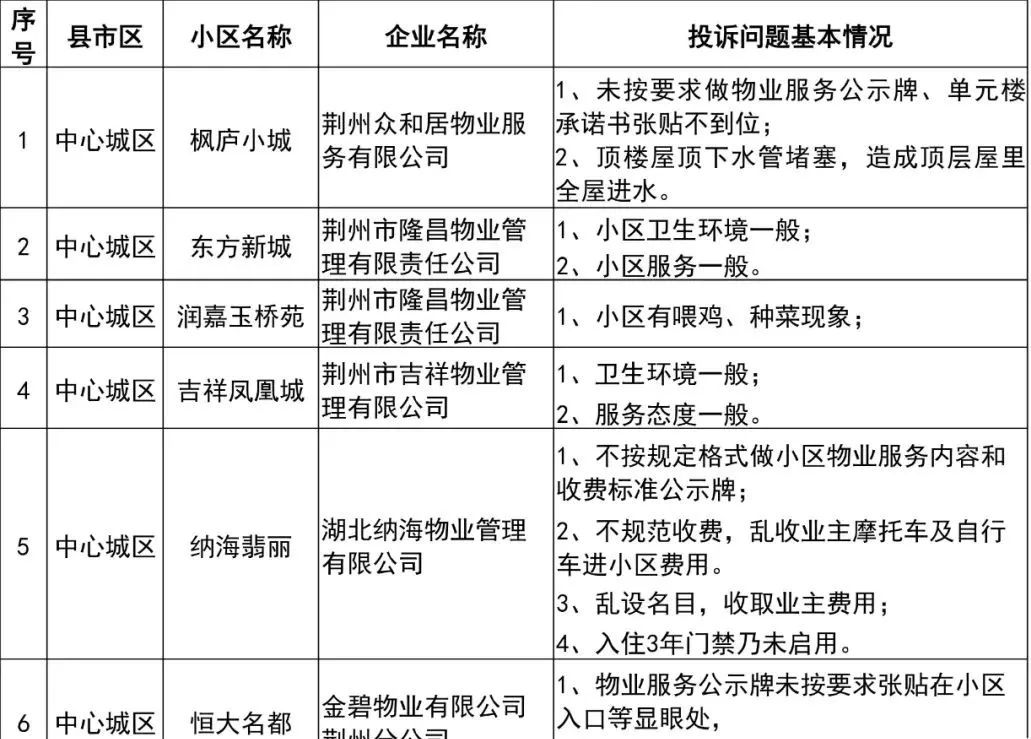
recentlyJingzhou Housing and Urban -Rural Development BureauannouncedJingzhou Prof...
Global curbing inflation expectations promotion agencies believe that the turning point of commodity prices will appear
The changes in commodity prices have always been the signal lights of the market. Since the second quarter, under the context of curbing inflation overseas, the situation of high commodity prices is